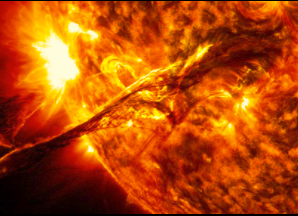hydrogen car Hydrogen It refers to a vehicle powered by a hydrogen fuel cell and powered by electricity through a hydrogen fuel cell. The term 'hydrogen car' and 'hydrogen car' includes both 'hydrogen internal combustion engine vehicle' and 'hydrogen fuel cell vehicle'. , 'hydrogen electric vehicle', etc. are appropriate. However, the hydrogen internal combustion engine vehicle is a meaningless method because it has no advantage. hydrogen fuel cell vehicle (FCEV, Fuel Cell Electric Vehicle)'. electric vehicle It is competing as a candidate for next-generation eco-friendly transportation means, and has advantages in terms of fuel cost and high output compared to internal combustion engine vehicles, and charging time and mileage compared to electric vehicles. [One] However, it is still largely behind electric vehicles in transportation infrastructure such as charging stations. As of 2020, companies that release and produce hydrogen cars include Hyundai Motor, Toyota, and Honda. The first hydrogen car in Korea was launched in 1993. Sungkyunkwan University 'Sunggyun No. 1', a hydrogen direct injection type engine that the internal combustion engine research team remodeled with an 800cc 3-cylinder engine # to be. The platform was Asia Automobile 'Towner van' was used, and it took 6 years to complete including the development of the most difficult injection valve, but it is a research model that has not been commercialized. 'Sunggyun No. 2' # 2. Kinds There are many people who only vaguely know that "hydrogen cars" are vaguely "cars that use hydrogen as fuel", but in fact, there are two completely different hydrogen cars. 2.1. hydrogen fuel cell vehicle electric vehicle hydrogen version of . Except for hydrogen fueled electric vehicles, electric vehicles run using already charged batteries as power sources. On the other hand, a hydrogen fuel cell vehicle receives hydrogen from a hydrogen fuel tank and immediately generates electricity for driving. The only waste discharged here is water. No smoke and almost no noise. Whether or not a separate battery is installed in a hydrogen fuel cell vehicle is optional, but in general, it is mounted in a small amount to utilize regenerative braking. 2.2. Hydrogen internal combustion engine car It is a method of obtaining driving power by exploding hydrogen similar to a general internal combustion engine. Hydrogen internal combustion engine vehicles, like fuel cells, retain the unique eco-friendliness and high performance of hydrogen. But FCEV The efficiency is much worse, the combustion system needs to be newly developed according to the fuel characteristics, and it is still in the research stage and has not received much attention because it has no special advantages from the consumer's point of view and maintains all the disadvantages of the internal combustion engine. As of 2021, Toyota is virtually the only automaker to continue research and development. For the above reasons, most of the hydrogen vehicles currently being studied are mostly FCEV All. Although it is said to be in the spotlight as a new means of transportation, it has not yet developed its spirit, but it can be said that it is a competitor of the next transportation method. electric vehicle This is because it has grown at an unexpectedly rapid pace. Nevertheless, in the hydrogen car camp electric vehicle Since there are many limitations that are difficult to improve, it is expected that the time will come when we will move to hydrogen cars. The problem is that we still don't know when that will be. 3. pros and cons 3.1. Advantages The performance of hydrogen as a fuel is excellent. The calorific value of hydrogen is about three times that of internal combustion engine fuel per equivalent weight. Batteries are heavy and have low power storage efficiency. It is easy to increase the mileage by combining the high efficiency characteristic of electric vehicles, so hydrogen fuel cell vehicles currently on the market provide a mileage of 100 km per 1 kg. battery base electric vehicle It is usually a longer mileage. zero emissions FCEV There is no carbon (C) or other impurities in the fuel, and only water is produced when hydrogen and oxygen meet. Unlike internal combustion engines carcinogen or a large amount of carbon exhaust gas does not come out Although it is characterized by the discharge of water, the amount is not a problem in normal road conditions. running air purifier To operate a hydrogen fuel cell stack efficiently, clean air from which fine dust is removed is required. The hydrogen car sucks in air, purifies it, uses it in a hydrogen fuel cell, and releases clean air through the exhaust again. Airborne dust and chemicals are purified through a three-stage air purification system. So, it also functions as an air purifier. Hyundai Nexo can purify 26.9 kg of air in one hour of driving. This is equivalent to the amount of air that 48.9 adults breathe in one hour. However, since the filter required for air filtration is consumable, it is an advantage for the environment, but it can also be a disadvantage for the vehicle owner because the maintenance cost is forcibly increased. 3-stage air purification system ① More than 97% of ultrafine dust is removed from the air filter that collects dust and chemicals ② Extra fine dust is removed from the surface of the membrane humidifier (dry air humidification through the humidification membrane) ③ Removed from gas diffusion layer made of carbon fiber paper with micropore structure inside fuel cell stack Example of Hyundai Nexo's air purification amount When running 10,000 NEXOs, it purifies the air that is used by about 490,000 adults. Air required for one hour per adult: 0.55kg, air purification for one Nexo for one hour: 26.9kg (consumption by 48.9 adults) The effect of directly purifying a significant amount of fine dust (tires, road surface abrasion, etc.) generated on the road while driving. According to the US EPA 'Analysis of Pollution by Road Distance', the closer to the highway, the higher the fine dust (up to twice) The concentration of fine dust per cm3: 350 (300 m from the road) → 400 (150 m from the road) → 700 (from the road) 20m) low cost of hydrogen In the past, the cost of hydrogen production was higher than the cost of oil. Currently, hydrogen can be produced inexpensively in large quantities through the natural gas reforming method or naphtha cracking, so it is produced inexpensively at a unit price of about 5,000 won per kg. These technologies are still in use today and are commonplace. In this case, the production cost is expected to be lower than that of fossil fuels. It is difficult to know how the future will change when hydrogen cars are mass-distributed. It should also be taken into account that fossil fuels are taxed at about 60% of the sale price. in the government hydrogen economy Activation Roadmap” announced the hydrogen price target as 4,500 won/kg in 2030 and 3,000 won/kg in 2040. Efficient use of existing electrical infrastructure In solar power generation, the peak of power generation is midday, so energy may be wasted at this time. Hydroelectric power and nuclear power have a lot of idle power in the night and early morning power generation. If this power is used for hydrogen production, the efficiency of power use increases. That is, hydrogen becomes a medium for conserving electrical energy. fast charging Unveiled by Hyundai in 2018 nexo charging time is less than 5 minutes. Fossil fuel injection takes about 1 to 2 minutes, so it takes a little longer than this, but it is a sufficient charging time without any inconvenience. On the other hand, the storage battery electric vehicle It is inherently difficult to shorten the charging time, so it takes more than 30 minutes, usually several hours, no matter how fast it is. 3.2. Disadvantages Emission of pollutants such as carbon dioxide during hydrogen production Hydrogen cars do not emit soot or carbon dioxide, but they do emit a large amount of carbon dioxide, a greenhouse gas, in the process of producing hydrogen. Almost to the level of filtering out only hydrogen and discharging the rest of the residue. Currently, there are many methods that can produce hydrogen itself, but electrolysis is not economical, and in order to secure mass production and economic efficiency, the method of processing fossil fuels such as natural gas reforming is the best. However, these methods inevitably emit greenhouse gases and have a problem in that they cannot reduce dependence on fossil fuels, so the use of alternative fuels becomes meaningless. In addition, various carbon reduction technologies such as carbon dioxide capture are still difficult to achieve economically on a large-scale, and since hydrogen production is carried out in the private sector, it is enough not to reduce carbon, and if it is enforced by law, it is a good reason to receive a price increase. There is an opinion that hydrogen produced as a by-product in some petroleum refining and cracking processes should be used, but the amount of such by-product hydrogen is absolutely insufficient. Hydrogen from petroleum refining is mostly produced in the desulfurization process or gasoline reforming ( cracking ), most of them are self-consumed, and most of them are sold without leaving enough to be sold separately. naphtha It is by-product hydrogen produced as a by-product of the decomposition process. Currently, annual sales of by-product hydrogen in Korea are about 260,000 tons, and even if one-third of it is used for hydrogen cars, it is only enough to operate 430,000 passenger cars per year, which is only 2% of the more than 20 million vehicles. In addition, since hydrogen production is not the purpose of the industry in which hydrogen is produced as a by-product, mass production cannot be carried out based on it, and the existing demand is not going anywhere, so economic efficiency is not secured. In the end, if hydrogen cars are mass-produced to the extent that the production of by-product hydrogen, which is currently free, is insufficient, eventually, natural gas will have to be converted and used. However, in view of the reality of Korea as of 2020, it is difficult to say that the above issue is very convincing. First of all, it is true that natural gas reforming generates greenhouse gases, but the amount of greenhouse gas generation varies greatly depending on the components of natural gas used. Natural gas reforming using methane (garbage site), etc., generates relatively little greenhouse gas. And before that, Korea is a country with a huge petrochemical infrastructure, and most of the hydrogen produced in Korea is by-product hydrogen. Hydrogen supplied to hydrogen vehicles is also by-product hydrogen. In other words, considering Korea's petrochemical infrastructure, the problem of greenhouse gas generation in the hydrogen production process is not that big of a problem. If so, is by-product hydrogen insufficient? In the above criticism, it is calculated that 430,000 hydrogen cars can be operated if it is assumed that 1/3 of the by-product hydrogen sold in Korea is used for hydrogen cars. But is this less? As of the first half of 2020, the number of hydrogen cars in Korea just exceeded 10,000. Annual sales should be around 10,000 units if good, and there is no reason to worry about 400,000 units, even considering that production will increase later. As one proof that by-product hydrogen is not insufficient, a 40MWh annual by-product hydrogen power plant was completed and put into operation in July 2020 in Chungnam. Hydrogen fuel using by-product hydrogen produced at a nearby petrochemical complex








